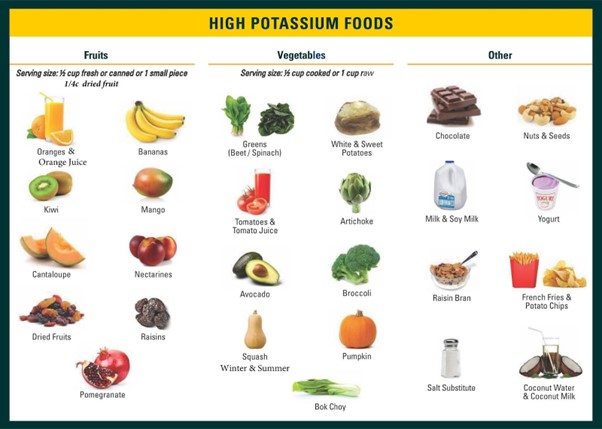In performing health screening for a postmenopausal female client, which assessment data indicates the need for referral to a nutritionist?
Reference Range
Total Calcium [Reference Range: Adult 9 to 10.5 mg/dL or 2.25 to 2.62 mmol/L]
High Density Lipoproteins (HDL) [Reference Range: Female: greater than 55 mg/dL or greater than 0.91 mmol/L] Glycosylated haemoglobin (A1C) Reference Range: 4% to 5.9%]
Serum HDL (high-density lipoprotein) of 35 mg/dl (0.91 mmol/L).
Serum HbA1c (glycosylated haemoglobin) of 4.8% (0.05).
BMI (body mass index) of 22 kg/m2.
Total serum calcium of 10 mg/dl (2.5 mmol/L).
The Correct Answer is A
Choice A
Serum HDL (high-density lipoprotein) of 35 mg/dL (0.91 mmol/L). Among the options provided, a serum HDL level of 35 mg/dL (0.91 mmol/L) is the assessment data that indicates the need for referral to a nutritionist. HDL is often referred to as "good" cholesterol because it helps remove excess cholesterol from the bloodstream, reducing the risk of cardiovascular disease. In this case, the HDL level of 35 mg/dL is below the recommended reference range for females (greater than 55 mg/dL or greater than 0.91 mmol/L), which could suggest a potential need for dietary and lifestyle interventions to improve cardiovascular health.
Choice B
Serum HbA1c (glycosylated haemoglobin) of 4.8% (0.05) is incorrect. This HbA1c level is within the normal reference range (4% to 5.9%) and indicates good blood sugar control.
Choice C
BMI (body mass index) of 22 kg/m² is incorrect. A BMI of 22 is within the normal weight range and might not necessarily indicate the need for a nutritionist referral.
Choice D
Total serum calcium of 10 mg/dL (2.5 mmol/L) is incorrect. This calcium level is within the normal reference range and might not require a nutritionist referral, unless there are other specific concerns related to calcium intake.
Nursing Test Bank
Naxlex Comprehensive Predictor Exams
Related Questions
Correct Answer is A
Explanation
Choice A
Potatoes, bananas, and oranges should be encouraged. Hypokalaemia refers to a lower than normal level of potassium in the blood. Potassium is an essential mineral that plays a crucial role in maintaining proper muscle function, nerve signalling, and fluid balance in the body. To address hypokalaemia, it's important to consume foods that are rich in potassium.
Choice B
Cranberry juice, butter, and hard candy. None of these foods are particularly high in potassium should not be encouraged. Cranberry juice is more commonly associated with urinary tract health, and butter and hard candy do not contribute significant amounts of potassium.
Choice C
Milk products, canned salmon, and fresh oysters should not be encouraged. While milk products contain some potassium, they are not as potent a source as other options. Canned salmon and fresh oysters do provide some potassium, but they are not as well-known for their potassium content as other foods like bananas and potatoes.
Choice D
Hard cheese, whole grain cereals, and dried vegetables should not be encouraged. These foods are not known for being particularly high in potassium. Hard cheese and whole grain cereals have limited potassium content, and dried vegetables, while containing some potassium, are not among the best sources.

Correct Answer is B
Explanation
Choice A
Describing the value of eating smaller portion sizes is not appropriate. While portion control is important, this advice alone might not address the overall dietary quality and exercise component necessary for effective weight loss.
Choice B
Encouraging a well-balanced diet and moderate exercise is appropriate. This intervention focuses on promoting healthy and sustainable weight loss. A well-balanced diet helps ensure that the client is getting all the necessary nutrients while aiming for a calorie deficit for weight loss. Moderate exercise complements dietary changes and contributes to overall health and weight management.
Choice C
Exploring the reasons, the client wants to lose weight is inappropriate. While understanding the client's motivations is valuable, this doesn't directly provide guidance on how to achieve the goal of losing 10 pounds.
Choice D
Determining if the client has a history of anorexia is inappropriate. While assessing for eating disorders is important in general, assuming there's no indication of anorexia, the focus should be on providing guidance for safe and effective weight loss.
Whether you are a student looking to ace your exams or a practicing nurse seeking to enhance your expertise , our nursing education contents will empower you with the confidence and competence to make a difference in the lives of patients and become a respected leader in the healthcare field.
Visit Naxlex, invest in your future and unlock endless possibilities with our unparalleled nursing education contents today
Report Wrong Answer on the Current Question
Do you disagree with the answer? If yes, what is your expected answer? Explain.
Kindly be descriptive with the issue you are facing.
